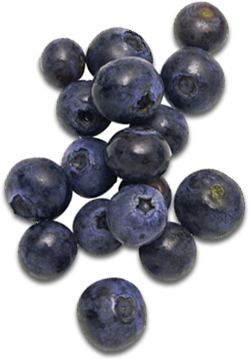no items to display
7 Ways to Reduce Food Waste
If you’ve ever cleaned out your crisper and been appalled by some unidentifiable slimy thing at the bottom, you’ve probably resolved not to let fruits and vegetables go bad anymore. But it’s not always easy to reduce food waste. If you live alone like me, you may go overboard and buy more fruits and vegetables than you can reasonably eat. And if you have a family, it’s hard to know when the kids will inhale the fresh blueberries you bought and when the berries will linger sadly in the fridge getting wrinkly and shriveled.
An article published in the Washington Post last fall laid out some sobering facts.
In 2012, the most recent year for which statistics are available, Americans threw out a shocking 35 million tons of food. And the problem is getting worse. In 1980, less than 10 percent of total waste was food. Today it’s more than 20 percent.[i]
Food waste represents not only a loss of the nutrients food contains, but also the money and energy spent to grow, distribute, and buy it. It’s also an environmental hazard. Rotting food in landfills releases methane, which contributes to climate change and is 20 times more harmful than carbon dioxide!
What’s the type of food most likely to be wasted? Produce. I was shocked to find out that a startling 52 percent of fruits and vegetables grown -- more than half -- end up in the trash.
The good news is you can reduce food waste in several ways.
1. Grow Your Own Herbs: Why buy a whole bunch of cilantro when all you need is a few leaves to top your quesadilla? When an herb is growing in your garden (whether you tend a traditional garden or a Tower Garden), you can harvest what you need and nothing goes to waste.
2. Store Fruits and Vegetables Properly: When you put your produce away, make sure to store fruits and vegetables that produce ethylene, a ripening gas, apart from those that are sensitive to it so as to avoid premature spoiling. For more specifics, see this handy list from Real Simple. Also, don’t wash produce until you’re ready to use it, poke holes in airtight bags so air can circulate, and don’t cram the crisper.
3. Freeze What You Can’t Use: A chest freezer is a big help in avoiding food waste, but no matter what kind of freezer you have, many fruits and vegetables can be frozen, even avocadoes! I covered the specifics about freezing produce in a previous blog post.
4. Use the Whole Vegetable: Are you throwing away useful parts of produce? It may surprise to you find out you can eat carrot greens; just use them as you would parsley. Broccoli stems are great in stir-fries, and I think homemade applesauce and mashed potatoes are actually better when you skip peeling. Here’s more info on using fruits and vegetables in their entirety.
5. Donate: Not all food banks and charities that collect food will accept perishables, but some, like D.C. Central Kitchen, in Washington DC, do. If you’re ever hosting a big event, it’s worth finding out ahead of time if a food bank near you does in case you end up with more guacamole or roasted Brussels sprouts than you can use.
6. Make Stock: If you have some fruits and vegetables that are past their prime but still edible, try making stock. You can find instructions here. You will still need to dispose of the boiled food after you finish, but you will have extracted much of the nutrition from it.
7. Compost: No matter how hard you try, you will never use all the fruits and vegetables you buy 100 percent of the time. That’s the beauty of composting. Not only does nothing go to waste, but at the end you have nutrient-rich soil for your garden.
What sort of tips do you have for avoiding food waste?
References:
[i] Ferdman RA. Americans throw out more food than plastic, paper, metal, and glass. Washington Post. 2014 Sep 23. http://www.washingtonpost.com/blogs/wonkblog/wp/2014/09/23/americans-throw-out-more-food-than-plastic-paper-metal-or-glass/






